Energy Saving, More Than a Hobby
Posted by Martin Kleinman in Energy saving, Solar energy Add comments Since January 2008, we are busy in our household trying to reduce our energy consumption. We succeeded in this task quite well. We reduced our gas consumption with 30% and our electricity consumption by a staggering 90%. Are you curious how we did this?
Since January 2008, we are busy in our household trying to reduce our energy consumption. We succeeded in this task quite well. We reduced our gas consumption with 30% and our electricity consumption by a staggering 90%. Are you curious how we did this?
The Start
Our Household consists of three persons, two adults and a child. We live in a standard Dutch rowhouse (Dutch: “rijtjeshuis”) which was built in 1974. For the standards back then, our house is extremely well insulated in that our floor, walls and roof are all equipped with a fair amount of insulation.
Without really knowing our energy consumption, our energy bill has always been very high. Until January 2008, we used an average of 5500kWh of electricity and 1550m3 of natural gas each year. Since July 2006 we kept track of our consumption by monitoring our meters monthly. So we did see our high consumption but we didn’t really do anything about it.
In the beginning of 2008, I wanted to know how much electricity our own server was using. We were in for a serious shock. Even after a few days we noticed that our server was using between 140 and 150W continuously , 24 hours a day, 7 days a week. When calculation to a yearly consumption this is 1300kWh. Our server was responsible for almost 25% of our electricity bill!
The Numbers Tell the Tale
This has been eye-opening for us, and after this we wanted to know the energy consumption of every appliance and then try to reduce this as much as possible without losing our comfort in our house.
We started to map all of our appliances, including all of our lamps with the digital electricity consumption meter we also used to measure our server. I put all of these appliances in an Excel sheet and I calculated the consumption in a year for each line. This can be seen in the column “Oud Verbruik”
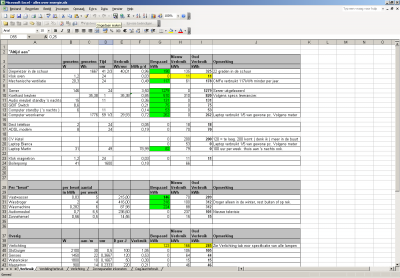
Figure 1: : the energy consumption of each appliance in Excel.
After measuring and calculating the yearly consumption, I noticed that my Excel sheet came very close to our actual yearly consumption. I was off by about 10%. I’ve also put in this number in Excel under “onbekende verbruiker”, translated “unknown user”.
The Server
We barely used the server. The server was intended as a fileserver, downloadserver and as a development and testserver for my work. For development and testing, I used my laptop instead. The fileserver part was only used for our documents and photos. We moved these to an external harddrive. We also stopped downloading, as we didn’t watch the movies we downloaded anyway. In other words, the whole server lost its function.
Result: -1286kWh for period over a year and a very distinct drop in our energy graphs.
Standby Consumption
The next victim was our standby consumption in our house. An Example:
even with all audio and video appliances switched off, we would use 15W of energy. For our computer and printer in the living room, this was 6W. Compared to the yearly consumption, this was 131kWh and 53 of unnecessary energy consumption.
For this we bought two extensions cords with a kill switch. At night and when we leave the house we switch both off.
Result: -184kWh.
Refrigerator
Completely by accident, we discovered that our refrigerator in our kitchen also was a problem. One night our son got sick and I tried to get some sleep on the couch in the living room. I noticed that the compressor of the refrigerator was running constantly
Up until that point , I hadn’t checked it with our kWhmeter. The result was shocking: over 800kWh for a period of a year. A new refrigerator and comparable one would only use 300kWh according to the website www.kieskeurig.nl. After a short search, we found a cheap but good A+ class refrigerator with a yearly consumption of only 310kWh.
Result: -500kWh.
Other Savings
Laptop vs. Desktop
We sold our desktop computer in the living room and bought a laptop. Instead of 120-130W contiguous usage, the laptop only uses 35-40W of power. Another advantage is that we both can use our computers while sitting on the couch in the living room.
Forced House Ventilation
Our house is equipped with a standard ventilation system. This system uses around 180kWh on a yearly basis. There are also new similar DC systems that do the exact same thing for only of a fraction of the amount of energy. So we changed our ventilation unit for a ITHO CVE2 DC fan. Not only is this new one a lot more energy efficient its also a lot more silent!
Network Changes
We used a gigabit switch and a wireless access point for our home network. We switched from one ADSL provider to another and got another all in one ADSL modem/router/access point. This also saved two appliances 24/7.
Refrigerator in our Loft
We bought a new refrigerator we use in our loft. Of course we switched to a A++ model. It was tempting to just switch off this refrigerator altogether, but we do use it often and normally its filled over 75%. Again we used the website www.kieskeurig.nl to find a A++ refrigerator.
Lights
We made a list of all the lamps we had and calculated and guessed what they would use on a yearly basis. The total energy consumption for our lights was around 300kWh in the beginning. Almost all lights are changed for either energy efficient ones and even LED bulbs. We also switched over from halogen lighting in our living room to energy efficient ones. We found a brand that almost exactly matched the same color as the halogen version. With this we reduced our energy consumption to 170kWh.
Temporary Results
In a period of less than a year, we reduced our energy consumption from 450kWh each month back to 250kWh. This got us hooked for more!
We now had a valuable Excel sheet with all the appliances and lamps. I added an extra column called “extra savings”. With some colors we could see how much we already saved and how much we still could do.
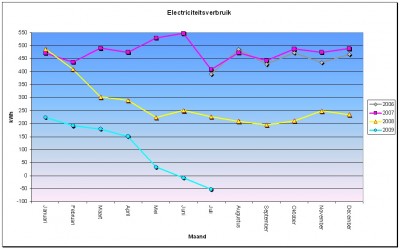
Figure 2, Electricity consumption van 2008 till now.
Solar Heating
Around April or May of 2008 we heard that our government would start another round of extra funding for solar heaters. From that moment, I started to learn more about solar heaters and what possibilities there are.
One thing I noticed is that there is very little to next to nothing to be found here in The Netherlands about this subject.
Our first plan was to take a standard solar heater from Remeha. We already had an HR gas central heater from the same brand, so this seemed logical. But after reading more and more about solar heaters, we both started to have doubts. Around July, we made the final decision to get a solar heater to further reduce our energy consumption.
We immediately invited several contractors in our house to get more information and for a quotation. We noticed several things:
- Some contractors don’t even take the time to contact us!
- All contractors we spoke wutg know very little about the subject and only a few have actual experience in installing them and even then in very limited numbers
- Almost no contractor wants to sit down for a moment for a good conversation about what we want and why we want it. Almost all want to take a look upstairs, take some measurements and then leave as soon as they can
- The word “Evacuated Air Tube” is a complete mystery to all of them.
- To make a long story short, it took five months from the decision until the solar heater was actually installed on our roof. All of the troubles that we had with are documented on our blog. This blog can be found at http://www.familie-kleinman.nl/energie ( dutch only for now )
We have chosen for a system with 48 evacuated air tubes and a 300 liter storage tank. The collector is installed on the west side of our roof. Because the collector is installed in a less than ideal situation, we decided to oversize the collector a bit. Usually there is a ratio of 1 tube for 10 liters of water in the storage tank. We chose a ratio of 1 tube to 6.25 liters of water.
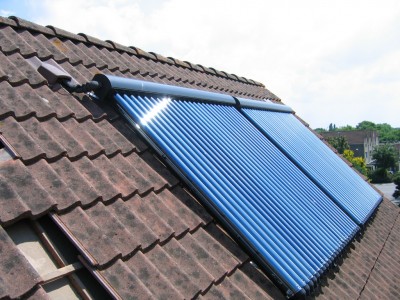
Figure 3: Our collector, 48 evacuated air tubes in the sun.
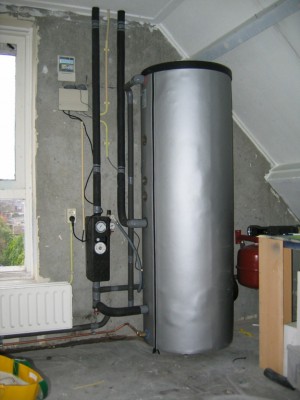
Figure 4: The Tank, Pump and Controller.
The installation is up and running since November 24th of 2008. I made an Excel sheet where I try to measure the energy savings because of the solar heater. I measured our hot water usage and compared this to the temperature in the boiler ( top and bottom ). There are some guesses in the sheet, but until now the savings I calculated compare to the savings on our energy bill.
Our CV installation has an advanced burner. It modulates its strength according to the input temperature of the water. The hotter the water, the less the CV unit has to do. When the water reaches a temperature of 60 degrees Celsius, the burn unit even switches off entirely. Because I can measure the input temperature of the cold water in the boiler and the output temperature of the boiler, I can make an assumption of how much natural gas we save.
And thanks to the size of the storage tank, our savings are quite high. With the 300 liters of water in it, we can cover 3 days of our hot water consumption. These so called buffer days are most noticeable in March and April. When you think about getting a solar heater, get a storage tank as large as possible. You only get such one installation in your lifetime, so it’s better to make it worthwhile! Making changes later is hard and probably very expensive.
In the first period from January till June, we saved 73m3 natural gas and 128kWh electricity, according to my calculations. This is a little less than expected. I expected to save 150-200m3 gas each year and between 350-400kWh.
Government
We got a refund of 628 euros for our solar heater from our government. The total investment then is 3307 euros including installation.
Hotfill for the Washing Machine and Dishwasher
To use our solar heater for the full 100% , we also attached our washing machine and dishwasher on our hot water circuit. Our washing machine is now connected to both hot and cold water and a mixer ( MS1002) is placed in between. On this appliance, we set the temperature we want to use, up to 60 degrees. We just program our washing machine as we always did. This appliance mixes hot and cold water to the requested temperature. After the first cycle, it automatically switches back to cold water.
This way, almost no electricity is used any more to heat the water. This saves an enormous amount of energy. I measured the energy consumption both before and after we started to use the MS1002. Before our machine used around 1kWh for one full wash. With the MS1002, this has dropped to 0,18kWh. So we are saving more than
80% for each wash!
I’ve made a short movie about the MS1002 and its usage. See below
MS1002 HotFill for washing machine
Our dishwasher is directly connected to the hot water line. The savings here are not as high as with the washing machine, but still around 50 – 60%. The dishwasher now takes a lot less time to complete its task. Instead of the usual 2 hours for one cycle, its now done in less than 1 ½ hours.
The manufacturer states that using hot water will cause the dishes not to be clean and is not as dry as it’s supposed to be. Both statements are not true for what we’ve seen in the last few months.
Solar Panels
I wanted solar panels for a long time, but my girlfriend didn’t want to because of the high prices and the price we already paid for our solar heater. This changed however when she saw pictures of a solar panel as a door cover at the front door.
Door Cover
Our front door is situated south, so this would be the ideal place for a soler panel. Using Marktplaats, a Dutch version of ebay, I bought a Shell ACN2000E solar panel ( 93Wp ) including the inverter. The total price was 350 euros.
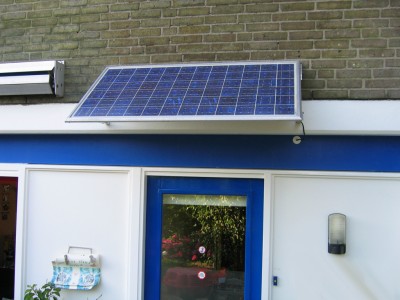
Figure 6: Cover above our front door.
Using some aluminium strips, I made the mounting brackets and with the help of my father- in- law, we connected the panel on February 28th, 2009 to our electricity grid. The inverter is mounted in our meter cupboard. I also
had to make a bracket for the inverter. We use a simple kWhmeter to measure the daily yield of the panel.
This cover made us both hopelessly addicted to solar energy. The first time the panel received full sunlight our meter suddenly stopped and started to rotate backwards. At that time we both were sold and addicted.
We expect to get around 60 – 70kWh annually with our cover. Until now, the panel has generated around 20kWh.
Big Installation & Meter
In April, we made the decision that we wanted more solar panels installed. This was made possible because of a financial advantage we had. This set would be bigger than 600Wp and because of that we had to change our meter panel as well. We replaced ours from 5 separate groups to 8 separate groups, giving our solar panels and washer/dryer also their own group.
With some luck we obtained 8 Conergy A165P panels with a total of 1320Wp. This set has almost the exact same width as our house. We mounted the panels as close to the rooftop as possible to prevent shading from the neighboring roof. This set is connected to a SMA SunnyBoy SB1000 inverter: we use a Sunny Beam to log into the system. The display of the Sunny Beam is mounted in our living room.
The whole installation was a breeze; the only small difficulty we had was the fact that our rooftop isn’t completly flat anymore. Because of this, it was a bit harder to mount the rails to the roof. We fixed this by using a set of screws.
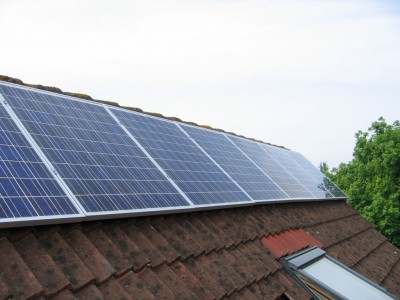
Figure 8, the 8 Conergy A165P panels on the east side of our roof.
This set should yield around 1000 till 1100kWh annually. In the period from May 9th until July 15th, this set has generated 325kWh.
Desert
By accident I bumped into a second hand set of solar panels on the Dutch version of Craig’s List. I bought 5 panels for 700 euros. The panels are 100Wp each, so I only paid 1,40 euro/Wp. They fit perfectly next to our solar heater on the west side of our roof.
These are Isofoton I100/12 panels, 100Wp each. This type consists of 72 cells where two cells are connected in parallel. The panels are connected in one string to a Soladin 600 inverter.
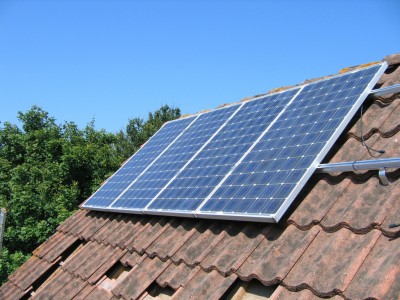
Figure 9, 5 Isofoton I100/12 panels on the westside of our roof..
This set should generate between 350-400kWh.
Yield
We now have 1913Wp connected to our grid. We expect to generate around 1450kWh annually. This is around 750kWh/kWp. Our big installation is doing a little bit better than that at this moment. The door cover is doing a bit less because of shade and the west installation is doing as expected.
Logging
We keep track of our three installs. I wrote my own reporting tool named JSunnyReports. With it I can generate graphs for each inverter and combined for all three of them. This tool can monitor multiple inverters and is currently being tested by several people. It can monitor almost all SMA inverters, Diehl, Solarlog and ofcourse manual tracked systems. Click here for more graphs and more information about JSunnyReports.
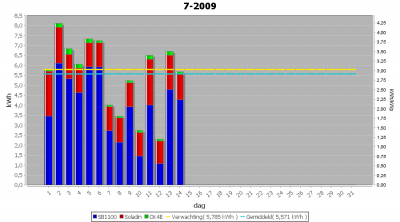
Figure 10, JSunnyReports in action
Natural Gas
We also cut our natural gas usage. Of course we did the “standard” things like:
- Insulate all CV pipes;
- Insulate all hot water pipes;
- Put special insulation foil behind all the radiators;
- Placed roller-blinds in our living room;
- Modified our curtains so that they won’t block our radiators.
Other interesting things:
Central Heating System
We started experimenting with our central heating system. The standard temperature was set at 75 degrees Celsius. We lowered this to 55 degrees Celsius.
The result is that it takes a bit longer to warm up our living room but that the temperature feels a lot more comfortable. It also gives this warm feeling a lot sooner, even after a few minutes after switching on the thermostat.
We also notice that the warmth stays for a longer time. We even lowered the thermostat because of it: 19.2 degrees Celsius during daytime and 19.4 in the evening. Besides that, if we do get cold, we do turn up the thermostat. Our natural gas consumption has dropped significantly because of this change.
Variable Degree Days
Its very hard to compare gas consumption over a longer period of time. This is because one winter might be fairly warm while another might be extremely cold. This can be solved by using the principle of varying degree days. This rules out the weather outside out of the equation.
The formula is : 18 – average temperature for that day. By adding up all the different degree days for a month, it’s possible to compare the gas consumption between different periods.

Figure 11, gas consumption taking degree days into account.
The winter of 2008-2009 was a real cold one. Our gas consumption, however, was lower than the years before. In March and April, the solar heater also begins to have its effect on our gas consumption. Since June, our gas consumption is almost non-existent.
Replaced Glass
Because of the government refund that we had on the solar heater and money we got in return from our Energy company we decided to replace the glass in our living room with HR++ glass. We had old double sheeted glass in our living room less then 10mm thick. The new HR++ glass has a gap of 15mm between the two sheets of glass! So its a lot thicker.
Also, the ventilation shaft in the glass has been replaced by a new one. The old one was made out of aluminium and the new one is made from plastic and has a double insulated interior. We replaced the glass in April, so we have to wait until the winter before we can see, measure and feel the effects of the new glass.
Finance
The solar heater and the solar panels have a considerable price tag. In total, we have invested around 13,000 euros in our house from January 2008 till now.
From January 2008 until now we’ve saved around 1500 euros. Either by cutting our monthly energy costs and the refund we got from our government. If we had not started with our energy savings project our monthly cost to our utility company would be around 200 euros.
What we do now is putting the difference between what we should have paid and what we actually pay aside on a separate savings account. Also the money we get in return at the end of the year from our utility company goes onto the same account as well.
This way we know exactly what we have saved. With the money we have saved, we can do nice things, as described before. We paid for our HR++ glass with it. What is more fun than saving energy by saving energy?
Our new monthly payment to the utility company now is around 60 euros. So on a monthly basis we save 140 euros, and that for every month. Within a period of 7 years, all the investments will have paid for themselves. When the energy prices go up this will be even sooner.
Future
There are still a few things we can do in our house to reduce our energy consumption even further. Our floor is insulated but only with a layer of 5cm of foam. Nowadays, houses are being built with at least 18 till 25cm of the same foam. So we want to upgrade the insulation level of our floor as well. The plan is to add an extra layer of 12cm of foam and glue this to the already existing layer. We hope to do this before the winter season starts.
The same applies to our roof. We only have a thin layer of 20mm of PIR here out the outside. We could add an extra layer here on the inside of the roof as well. This only is quite complicated because we just renovated our attic and installed an extra roof. This extra roof makes it a bit more difficult to add insulation here. How and when we are going to do this is still unknown.
Last but Not Least
We have made a considerable dent in our gas consumption not to mention the crater we left in our electricity consumption. We could have put the money we have invested so far onto a savings account but we wouldn’t have had the same return on investment and fun from it as we have now.
The environment also smiles at us. Our household has become a lot less polluting. Now we can even make more changes to our house. To be continued about that then.
When we look back, we both share the same opinion. This is something we should have done a lot earlier. If you are in doubt at this point we can only make the following suggestion. DON’T HESITATE, JUST DO!
We hope that this article has given you some insight into our energy savings. We also do hope that some of our enthusiasm has been shared the same time. If you have any questions and/or you would like to see it for yourself. You are always welcome.
Martin & Bianca.
blog : http://www.familie-kleinman.nl/energie
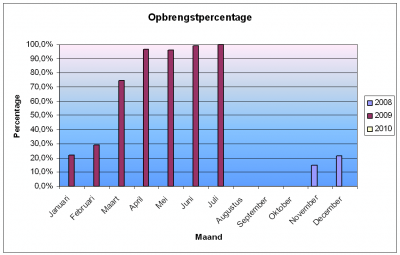
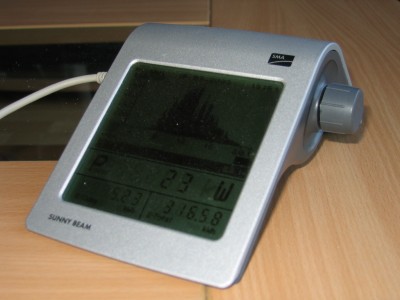



September 11th, 2009 at 7:19 am
Great job and really renewable.
I showed this article to my family to show them that my dedication to solar energy isn’t an obsession but a hobby, so now I can get on without the constant complains of where to put the panels, costs, and so on.
I placed my experiences on my site (http://home.kpn.nl/maas5455/), come and have a look and see for your self how solar energy can be done also.
http://home.kpn.nl/maas5455/
October 22nd, 2009 at 11:19 am
Dear Martin & Bianca.
Hello, It’s realy apriciatable what you did and I admire your observation and reflexes to wards the energy consumption and the way you act for energy conservation and efficiency.
may be people like you can save our beautiful plante but also can stop to build NEW dengerous POwer Plants
Regards,
naeem Khan
October 24th, 2009 at 12:54 am
Hi… My country, Malaysia, located in the tropical area where plenty of sunlight all year round and i think its very suitable for Solar Energy System to be used. But I myself have nothing of any knowledge on solar system … power generation… so i kind of interested in it… any simple tips that i can start with or even more advance ways of doing this solar things… TQ
March 9th, 2010 at 4:25 am
I don’t normally comment on blogs. I did however enjoy reading the main article. I’ll look over the rest of the this website. Thanks!
July 9th, 2011 at 1:13 am
this is future, congratulations.